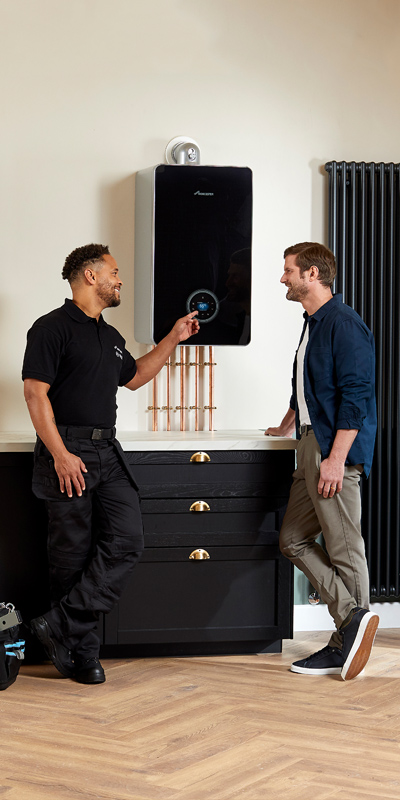1. Visual inspection: The heating engineer will visually inspect the boiler and its surroundings for any signs of damage, leaks, or corrosion. They will also check for proper ventilation and clearances around the boiler.
2. Boiler controls and settings: The engineer will check the boiler controls, such as thermostats, timers, and pressure gauges, to ensure they are functioning correctly. They may adjust settings as needed to optimise performance and efficiency.
3. Flue inspection: The flue is responsible for safely removing combustion gases from the boiler. The engineer will inspect the flue system for any blockages, leaks, or signs of damage that could affect its operation.
4. Cleaning: The engineer will clean the internal components of the boiler, including the burner, heat exchanger, and combustion chamber, to remove any dirt, debris, or soot buildup that could impair efficiency or pose a safety risk.
5. Safety checks: Safety is a priority during a boiler service. The engineer will conduct various safety checks, such as testing the boiler’s flame, gas pressure, and carbon monoxide levels, to ensure it’s operating safely and not emitting harmful gases.
6. Water pressure and circulation: The engineer will check the boiler’s water pressure and circulation system to ensure they are within the recommended range. They may also bleed radiators if necessary to remove trapped air and improve heating efficiency.
7. Seals and gaskets: The engineer will inspect the boiler’s seals and gaskets for any signs of wear or damage and replace them if needed to prevent leaks.
8. Boiler efficiency test: The engineer may perform efficiency tests to assess the boiler’s performance and identify any areas where improvements can be made to enhance energy efficiency.
9. Documentation: After completing the service, the engineer will provide you with a service report detailing the work carried out, any recommendations for repairs or maintenance, and confirmation that the boiler is safe and compliant with regulations.

